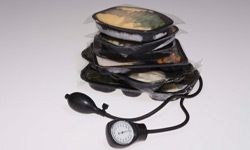Most of us have heard we should watch our sodium intake, but with our growing awareness of the role it plays in high blood pressure, few of us think of sodium as something that's essential to life. It helps muscles contract, assists nerve impulses and plays a part in the proper maintenance of fluid levels.
However, it doesn't take a lot of sodium to accomplish its biological mission, and more sodium doesn't translate to additional benefits. The U.S. Department of Health and Human Services recommends we consume 1,500 to 2,400 milligrams (mg) of sodium -- about one teaspoon of salt -- at most each day.
Advertisement
But some foods that we frequently eat have a lot more sodium than we realize. What are they? Keep reading to find out.


